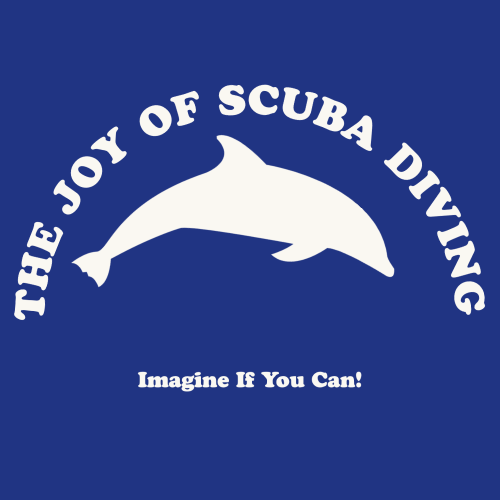Are you tired of having to end your dives halfway through? You wonder why you’re always running out of air before anyone else in your dive group. Even your dive buddy is feeling frustrated having to end his dive sooner than he wanted because you were low on air
I know it’s been frustrating… trust me I know what you’ve been going thru. It’s quite normal to have those feelings during your dives when you’re still new to scuba diving. I went thru the same thing so this article is written especially for you. I’ll tell you how to conserve the air in your tank. I have 8 amazing tips for you with a great video for you to watch. They really work.
Let’s begin!
1) Breath slowly and deeply.

One of the amazing processes of our human body is the ability to breathe the necessary air and have it circulate in our tissues, giving us energy.
Each breath you take, you take in oxygen and this oxygen goes into the lungs, gets absorbed into the bloodstream and is circulated throughout your body. Carbon dioxide waste is picked up from the cells and exhaled out through the lungs creating the stimulus to take another breath.
You breathe differently underwater than on land, and it’s important to conserve your energy. Taking short and shallow breaths will want you to breathe faster or over-breathe because of increased carbon dioxide.
To increase your bottom time, always breathe slowly and deeply to get the best maximum breathing efficiency underwater.
2) Be Streamlined.
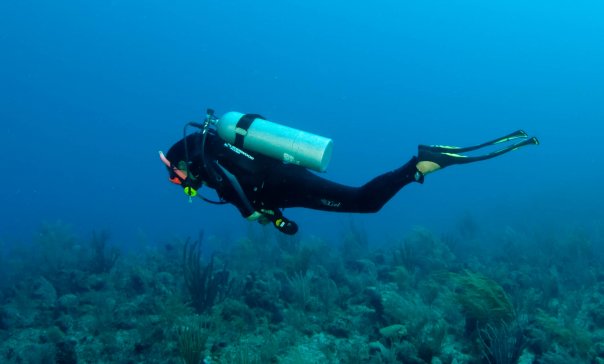
If you can see yourself underwater, what would your profile look like? Is your BCD too large? Is your regulator hose too long? Are you wearing too much lead weight?
How does your professional tour guide look and what is he doing that you’re not doing?
Before you make your entrance into the water, tuck or clip hanging equipment like the octopus to reduce underwater dragging. If you’re carrying a flashlight put it into one of your BCD pockets.
Make sure nothing is dragging and bring with you only what you need.
Being in the habit of being streamlined will also help you swim into narrow spaces and help prevent entanglement.
3) Positioning Your Arms.
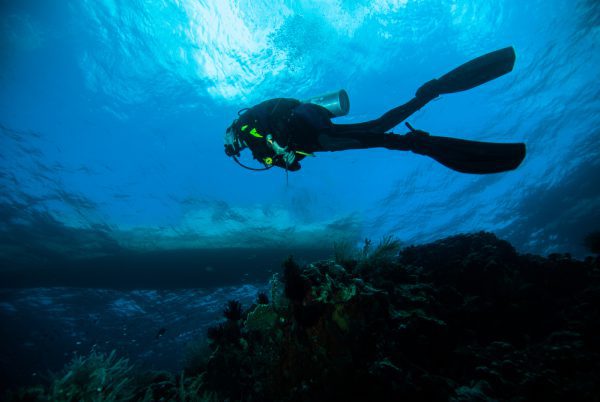
Flailing your arms about or trying to use your arms to push your way through the water, will only cause you to use more energy and deplete air out of your tank.
Keep your arms still.
Here are some ways you can place your arms:
- Arms folded in front of your face
- Interlock your right and left-hand fingers together or hand fold and position your arms in front of your lower body
- Arms behind your BCD or under the tank but if you come too close to coral you may not be able to free your arms quickly
- Arms folded in front like what bouncers do – my fav
You can put your arms anywhere you like, just place them in a way to help you streamline. Keeping your arms still will also keep you calm and make you feel like you are in control.
4) Maintain Your Dive Equipment.
Bubbles coming out of your equipment means your tank is using up air.
Depending on where the bubbles are coming from, you may not see them, but this is a good point to bring up during your pre-dive buddy inspection. Ask your buddy to keep an eye out for any usual bubbles coming out from your equipment during the dive and of course, you will do the same for him/her. The only bubbles you should see, are the exhaust bubbles from the carbon dioxide being released after you exhale.
Air can be lost from certain parts of your dive equipment such as:
- Worn out o-rings on your air tank and in your 1st stage valve.
- A free-flowing octopus can waste a lot of your good air very quickly. Try keeping the mouthpiece facing downward.
- A leaky mask is another issue that can cause air loss because you have to blow air into the mask to remove the water during the duration of the dive.
Before your dive vacation, inspect your equipment for any leaks and have it serviced.
5) Be Relaxed.
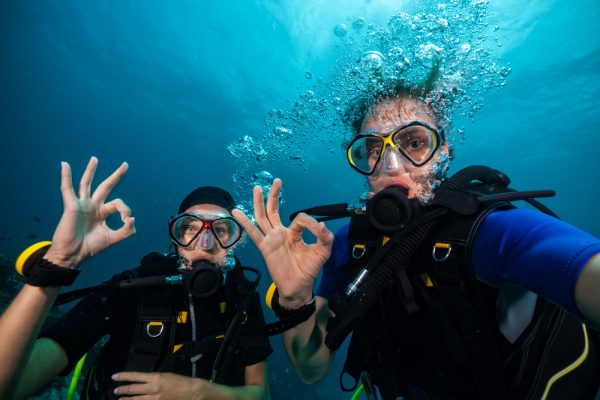
Have you seen divers that seem to be in ‘sleep’ mode? They move effortlessly and glide through the water like they are one with the ocean.
If you are a new or novice diver, you may feel some anxiety and have the tendency to use your air supply half-way through the dive. What happens is your heart rate goes up, your breathing intensifies causing carbon dioxide buildup in your lungs creating a greater desire to breathe faster.
You quickly deplete the tank of air to a dangerous out-of-air level, signal to your dive buddy you are getting low on air and both of you end the dive and return to the dive boat.
One of the best ways to relax is to discuss any stressful issues either with your dive buddy or your tour guide.
If you are not ‘stressed’ but still consume a lot of air, the best advice I can give you here is to keep doing more dives and keep improving your dive skills by taking PADI’s Buoyancy Course.
The more dives you do and more dive skills you learn, the better controlled your breathing becomes, you gain more confidence and become a relaxed diver.
6) Perfectly Weighted And Neutrally Buoyant.
The objective here is to be neutrally buoyant. Staying neutrally buoyant is the easiest way to swim horizontally and slowly.
Do you feel like you bob up and down like a yo-yo during your dives? You always ask for extra lead weight because you don’t like the idea of struggling to stay down to your dive group. As the dive progresses, you find you go down too deep and start pushing that inflate button on your BCD to push more air in to get back up to the level of where your dive group is. You just used air…
Now, let’s say, you don’t have enough lead weight, and halfway through the dive, you fight to get down to your dive group because your air tank is also lighter. You push the button to deflate. You are using energy and air…
Having control of your buoyancy means avoiding the sudden descents and ascents.
Also important for buoyancy control is to check the distribution of the lead weights on your belt. Is it evenly balanced and sitting properly on your waist?
So how do you know if you have the right amount of weight? Are you going to be diving with a new wetsuit and or a new BCD? Click here to find out.
7) Dive Shallow.
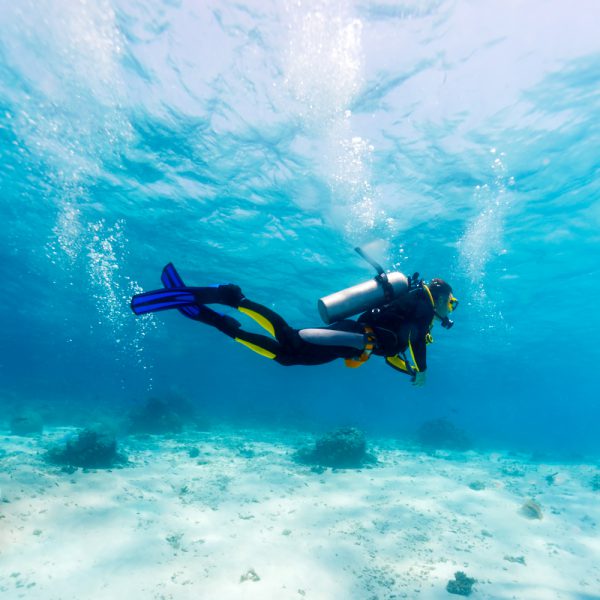
You would have learned in your Open Water Certification Course, that the deeper you dive down, the faster you consume the air in your tank and have a shorter bottom dive. This is because the air becomes more dense, making it difficult to inhale and exhale than breathing the air at the surface where the pressure and density are normal. The breathing effort at depth is even more intensified when you breathe the dense air faster.
Say you dive down to 66 feet/20 meters, each breath you take in means your lungs need to be filled with 3 times more air molecules to get the same volume. At 66 feet, the air in your tank will only last ⅓ as long as it does at the surface. The course also teaches you that it will take approximately 4 times the action to breathe twice as fast.
All the more reason for why you want to breathe slowly and deeply.
Even if you were to dive to your recommended recreational maximum dive depth of 130 feet/40 meters, it’s dark. There wouldn’t be much to see at that depth unless you want the thrill to dive that deep.
Want to see more colorful coral and lots of interesting sea creatures and have a longer bottom time? Try doing shallower dives around 20-30 feet!
8) Swim Slowly.
So why the rush? Slow down, relax, hover and simply enjoy your dive!
Swimming fast will only cause you to use more energy and of course consume more air, in fact, if you double your speed, you’re using 4 times your energy as previously mentioned in Dive Shallow.
You may sometimes be in a situation where you have to kick harder to get thru some current in order to do a descent where a great wreck lies waiting for your exploration. In this case, a line can be used from the boat close to the wreck and you can slowly descend hand over hand without using your legs, saving your energy.
If there are currents, sometimes you can swim closer to the bottom or near a wall.
What’s Next?
Let’s say you have now taken PADI’s Peak Performance Buoyancy Course. You practiced and practiced by doing more dives and now you’re feeling more comfortable. You can now hover, relax and spend more time in the water. Your profile is streamlined and you can glide underwater just like the pros. Good job!
Are you ready for the next challenge? If you haven’t taken PADI’s Advanced Dive Course, you might want to check that here. If you already have, perhaps you might want to do some diving from liveaboards… check it out here.
You can do all kinds of diving now that you’re good on your air and more confident in yourself. The ocean is waiting for you to explore. Check out night diving and wreck diving.
Perhaps you want to dive with the friendly giant manta rays or the gentle whale sharks.
I hope you found this article helpful and if you have any stories you would like to share or have any questions, it would be awesome to hear from you. Please put them in the Comment Box below.
Thanks for reading!
Monica
